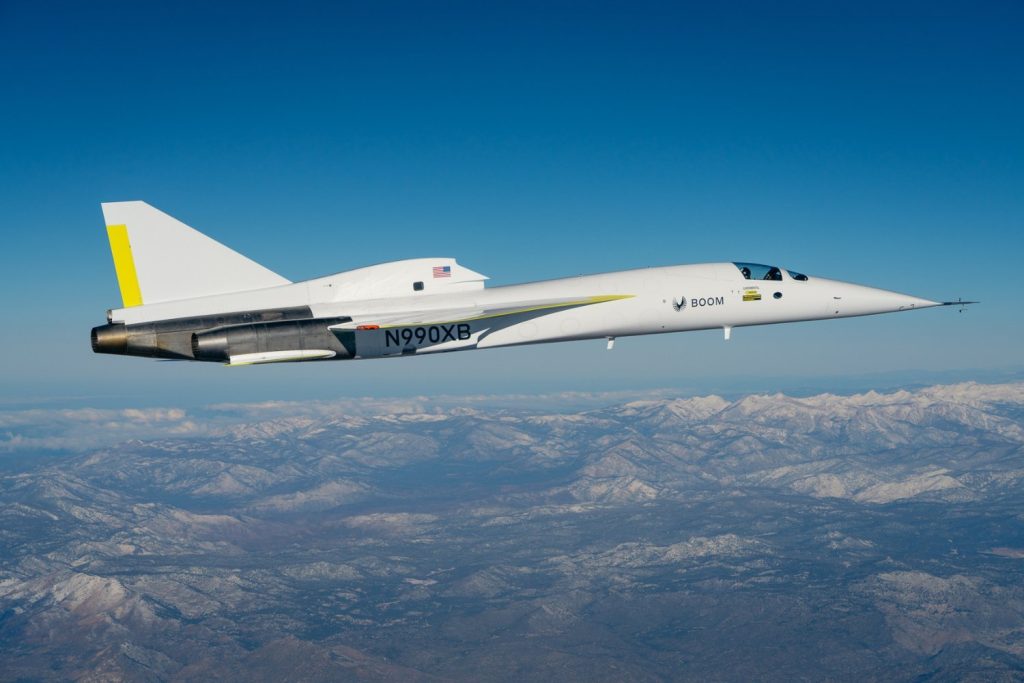
Boom Supersonic’s XB-1 Hits New Altitude Record as Supersonic Travel Nears Reality (Image Credit: Gizmodo-com)
Boom Supersonic’s demonstrator aircraft completed its eighth flight earlier this month, setting a new record for altitude and matching its top speed as it prepares to go supersonic by the end of the year.
The flight is part of a series of demonstration flights showcasing Boom’s intention to bring commercial supersonic travel back to America’s skyways. The rising costs of supersonic travel were slowly killing the industry even before the Concorde’s final flight in 2003. But private companies and federal agencies are devising ways to repopularize the previously deafening way of getting around, and the recent Boom flight inches the company closer to that goal.
The XB-1’s eighth flight took place on November 16, and achieved a maximum altitude of 25,040 feet (7,632 meters), its highest altitude so far. The flight lasted 54 minutes and the aircraft achieved a top flight speed of Mach 0.82, tying its record speed to date.
The demonstrator aircraft’s first flight took place in March 2024, and Boom plans approximately two more subsonic flights before achieving Mach 1.
Mach 1 is the speed of sound—about 767 miles per hour (1,234 km/hr). When objects exceed the speed of sound, they induce a sonic boom—the sharp, thunderous crack of an object breaking the sound barrier. The Federal Aviation Administration (FAA) prohibited civil supersonic flight over land in 1973, due in part to the constant sonic booms overhead and the booms’ rattling of windows freaking people out.
Boom Supersonic’s work on the XB-1 runs parallel to NASA’s development of the X-59 supersonic aircraft, which won a Gizmodo Science Fair award this year. At 99.7 feet (30.39 meters) long with a wingspan of just 29.5 feet (9 m), the stiletto-shaped X-59 has an arguably more eye-catching design than the XB-1. That’s because the X-59’s raison d’ětre is to mitigate the sonic boom that caused so much uproar when supersonic flight was more common.
One NASA engineer told Gizmodo that, to an observer on the ground, the X-59’s sonic boom will sound akin to the closing of a car door. In other words, the sonic boom will become a sonic thump.
Boom’s ultimate goal is to run commercial passengers on its Overture jet, for which the XB-1 is a technology demonstrator. Though the Boom XB-1 will be capable of exceeding the sound barrier, the company plans to fly its passenger jet at reduced speeds over land—specifically, at Mach 0.94, about 20% faster than subsonic flight.
Meanwhile, supersonic enthusiasts are hoping that the X-59 proves the “sonic thump” can mitigate the impact of sonic booms over land. After the aircraft’s in-flight performance is tested, the plane will be flown over several U.S. cities and residents will be surveyed on the invasiveness of the aircraft’s presence.
If the aircraft doesn’t disrupt life on the ground, the FAA may change its regulations surrounding civilian aircraft traveling faster than Mach 1 over land. That would not happen until 2027 at the earliest, so you may as well keep your focus on the Boom demonstrator for now.





